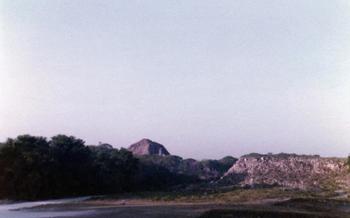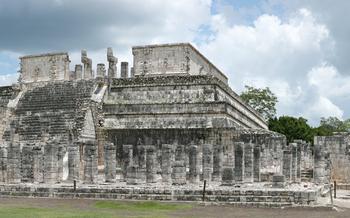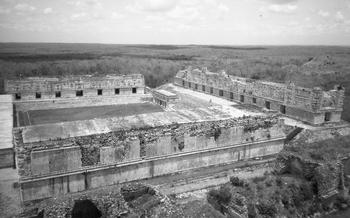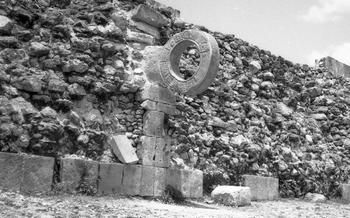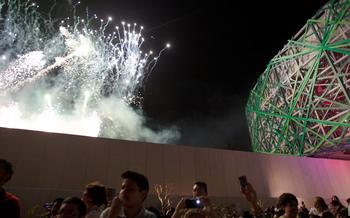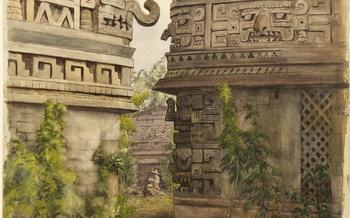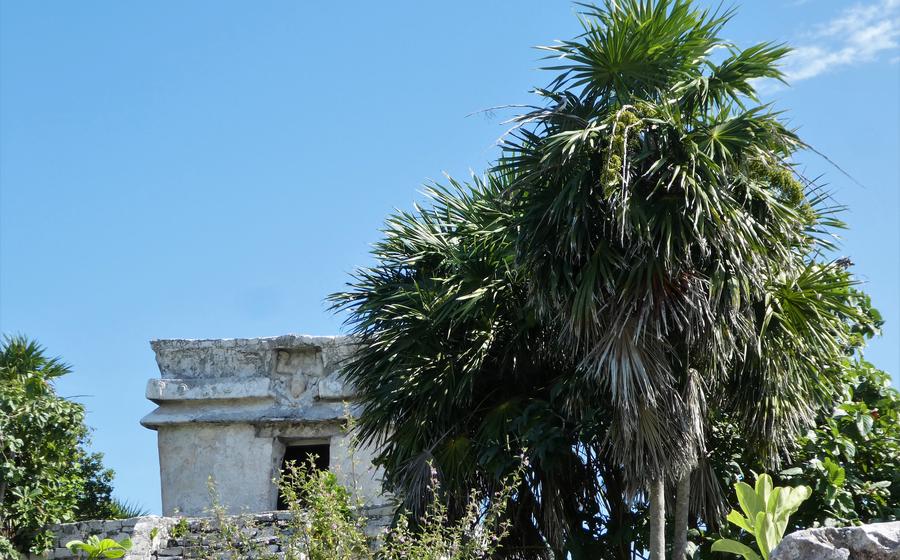
Temple of the Descending God
- The Temple of the Descending God: A Brief Overview
- Exploring the Temple Grounds: Unveiling Ancient Secrets
- The Temple's Architecture: A Masterpiece of Ancient Engineering
- The Temple's Rituals and Ceremonies: Connecting with the Past
- The Temple's Role in the Maya Civilization: A Center of Power and Prestige
- The Temple's Restoration and Preservation: Protecting a Cultural Legacy
- The Temple's Connection to Other Maya Sites: Unifying a Civilization
- The Temple's Impact on Modern Culture: A Symbol of Resilience
- The Temple's Role in Ecotourism: Balancing Conservation and Accessibility
- The Temple's Inclusion in the UNESCO World Heritage List: A Global Recognition
- The Temple's Place in Modern Mexican Culture: A Source of Pride and Inspiration
- The Temple's Link to the Maya Prophecies: A Realm of Speculation and Intrigue
- The Temple's Representation in Film and Media: A Cultural Phenomenon
- The Temple's Future: Ensuring Its Legacy for Generations to Come
- Insider Tip: Enhance Your Visit with a Guided Tour
The Temple of the Descending God: A Brief Overview
Standing as a testament to the ingenuity and spiritual beliefs of the ancient Maya civilization, the Temple of the Descending God is an awe-inspiring architectural wonder located in the heart of Tulum, Mexico. This iconic structure holds immense historical and cultural significance, serving as a place of worship, a center of religious ceremonies, and a symbol of power and prestige.
Built around the 13th century AD, the temple is believed to have been dedicated to the Maya rain god, Chaac, who was revered for his ability to bring life-giving rains to the parched land. Its name, "Temple of the Descending God," is derived from the belief that Chaac descended from the heavens to bless the Maya people with bountiful harvests.
Featuring intricate carvings and bas-reliefs depicting various gods, mythical creatures, and scenes from Maya mythology, the temple is a masterpiece of ancient engineering and artistry. Its unique architectural style and well-preserved state make it one of the most popular tourist destinations in Mexico.
To reach this magnificent temple, visitors can take a leisurely stroll through the ancient city of Tulum, marveling at the surrounding natural beauty of the turquoise Caribbean Sea and the lush jungle foliage. The best time to visit the temple is during the dry season, from November to April, when the weather is pleasant and the crowds are smaller.
Exploring the Temple Grounds: Unveiling Ancient Secrets
Venturing into the ancient city of Tulum, visitors are transported back in time as they wander amidst the ruins of this once-thriving Maya metropolis. The Temple of the Descending God stands as a testament to the ingenuity and artistry of the Maya civilization, its intricate carvings and imposing presence evoking a sense of awe and wonder.
The temple's name, "El Templo del Dios Descendente," holds a captivating story. It is believed that the Maya revered this temple as a sacred place where their gods descended to Earth. According to legend, the deity Kukulcan, known as the Feathered Serpent, would descend from the heavens to communicate with the Maya people. This belief added to the temple's mystique and significance, making it a place of pilgrimage and spiritual connection.
Exploring the surrounding area, visitors can immerse themselves in the natural beauty that envelops the temple. The lush jungle vegetation, with its vibrant colors and diverse wildlife, creates a serene and tranquil atmosphere. The nearby Caribbean Sea, with its crystal-clear waters and white-sand beaches, offers a stunning backdrop to this ancient site.
Unraveling the mysteries of the Maya civilization is a captivating experience. Visitors can learn about the Maya's advanced knowledge of astronomy, mathematics, and architecture as they explore the temple grounds. The intricate carvings and sculptures that adorn the temple provide glimpses into Maya mythology, religious beliefs, and daily life, offering a deeper understanding of this enigmatic civilization.
The Temple's Architecture: A Masterpiece of Ancient Engineering
The Temple of the Descending God stands as a testament to the architectural prowess of the Maya civilization. Its unique style, intricate carvings, and symbolic design exemplify the brilliance of their engineering skills.
The temple showcases a combination of Puuc and Coastal styles, blending the architectural traditions of the northern and eastern Maya regions. Its stepped pyramid form, reminiscent of a staircase leading to the heavens, symbolizes the Maya belief in the connection between the earthly and spiritual realms.
The temple's exterior is adorned with elaborate carvings depicting various deities, mythical creatures, and scenes from Maya mythology. These intricate artworks provide a glimpse into the religious beliefs and cultural practices of the Maya people.
The interior of the temple is equally impressive, with a series of interconnected chambers and passageways. The main chamber features a large altar, where religious ceremonies and rituals were performed. The walls are adorned with colorful murals, some of which have been remarkably preserved, offering insights into Maya artistic expression.
The construction techniques employed by the Maya in building the temple are nothing short of remarkable. Using only basic tools and materials, they managed to create a structure that has withstood the test of time and the harsh elements of the Yucatan Peninsula.
The Temple of the Descending God is a true masterpiece of ancient engineering, embodying the ingenuity, creativity, and spiritual beliefs of the Maya civilization. Exploring its architectural wonders is a journey into the past, allowing visitors to appreciate the brilliance and complexity of this ancient society.
The Temple's Rituals and Ceremonies: Connecting with the Past
In the heart of the ancient Maya civilization, the Temple of the Descending God served as a sacred ground where intricate rituals and ceremonies unfolded. These rituals were deeply rooted in the Maya religious beliefs and played a crucial role in their spiritual and cultural life.
Devout worshippers and pilgrims journeyed to the temple to participate in these sacred ceremonies. Priests, adorned in elaborate ceremonial attire, led the rituals, invoking the presence of deities and seeking their blessings. The temple's acoustics amplified the resonant chants and prayers, creating an otherworldly ambiance.
Through these rituals, the Maya people sought divine guidance, expressed their gratitude, and implored the gods for protection and prosperity. They offered precious offerings, such as incense, jade ornaments, and rare seashells, to honor the deities and demonstrate their devotion.
The temple also served as a stage for significant life events and transitions. Coming-of-age ceremonies marked the passage from childhood to adulthood, while marriage rituals celebrated the union of two souls. Funerals honored the deceased and ensured their safe journey to the afterlife.
The lingering spiritual energy at the temple invites visitors to connect with the ancient Maya on a deeper level, fostering a sense of reverence and awe. By immersing themselves in the temple's sacred atmosphere, travelers can gain a glimpse into the rich tapestry of Maya beliefs and traditions.
The Temple's Role in the Maya Civilization: A Center of Power and Prestige
The Temple of the Descending God played a central role in the political, economic, and social life of the Maya civilization. As the religious and administrative center of Tulum, the temple served as a focal point for power and prestige. The Maya rulers, known as ajaws, resided in the temple complex and exercised their authority over the city and surrounding region. The temple was also a center of economic activity, with markets and trade taking place in the surrounding plazas. The temple's location on the coast made it a vital hub for trade with other Maya cities and regions. The temple's economic importance was further enhanced by its role in collecting and distributing agricultural produce from the surrounding countryside.
The temple's political and economic power was reflected in its social hierarchy. The Maya society was highly stratified, with the ajaws and their families at the apex. The temple priests, who were responsible for religious rituals and ceremonies, held a high status in society. The temple was also home to a large number of artisans and craftsmen who produced goods for the ruling elite. The temple's social hierarchy was maintained through a complex system of laws and regulations enforced by the ajaws and their officials.
The Temple of the Descending God was a symbol of the Maya civilization's power and prestige. It was a place where the political, economic, and social order of the Maya was maintained and celebrated. The temple's legacy continues to this day, as it remains a powerful symbol of the Maya civilization's rich cultural heritage.
The Temple's Restoration and Preservation: Protecting a Cultural Legacy
The Temple of the Descending God has undergone extensive restoration and preservation efforts to safeguard its historical and cultural significance. Archeologists, historians, and conservators have worked diligently to maintain the temple's integrity and ensure its preservation for future generations.
One of the primary challenges in preserving the temple is the natural deterioration caused by time and environmental factors. The temple's exposure to the elements, including rain, wind, and humidity, has led to the erosion of its stone surfaces and the fading of its intricate carvings. To address this, conservators have employed various techniques to stabilize and protect the temple's structure. They have reinforced weakened areas, repaired damaged sections, and implemented measures to prevent further deterioration.
Another challenge lies in balancing the preservation of the temple with the need to make it accessible to visitors. The increasing popularity of the temple as a tourist destination has led to foot traffic and wear and tear on the site. To mitigate this impact, authorities have implemented visitor management strategies, such as limiting the number of visitors allowed inside the temple and designating specific pathways to minimize damage to the fragile structures.
The preservation of the Temple of the Descending God is not only a technical endeavor but also a cultural and ethical responsibility. The temple holds immense value as a tangible link to the Maya civilization and their rich heritage. By investing in its restoration and preservation, we not only protect a magnificent architectural masterpiece but also ensure that future generations can continue to appreciate and learn from this extraordinary legacy.
The Temple's Connection to Other Maya Sites: Unifying a Civilization
The Temple of the Descending God was not an isolated entity but rather an integral part of a vast network of Maya cities and settlements. Exploring its connections to other Maya sites provides a deeper understanding of the interconnectedness and complexity of this ancient civilization.
The temple shared architectural similarities with other Maya structures, suggesting a common design tradition and cultural exchange. Similarities can be seen in the use of corbelled arches, stepped pyramids, and elaborate carvings, indicating a shared artistic and engineering vocabulary among Maya builders.
Beyond architectural similarities, the temple's location along trade routes and communication networks facilitated cultural and economic interactions with other Maya cities. Goods, ideas, and religious practices were exchanged, contributing to a shared cultural identity and sense of unity among the Maya.
Pilgrimage routes connected the Temple of the Descending God with other important Maya sites, such as Chichén Itzá and Uxmal. These routes allowed for the exchange of religious beliefs and practices, fostering a sense of spiritual unity and reinforcing the temple's significance as a religious center.
By studying the connections between the Temple of the Descending God and other Maya sites, we gain insights into the Maya's sophisticated transportation systems, their extensive trade networks, and the interconnectedness of their civilization. These connections underscore the vital role that the temple played in unifying the Maya people and facilitating cultural, economic, and religious exchange.
The Temple's Impact on Modern Culture: A Symbol of Resilience
The Temple of the Descending God has transcended its ancient origins to become a symbol of resilience and survival in modern culture. Its enduring presence and captivating history have inspired artists, writers, and filmmakers to explore its significance in contemporary society.
In the realm of art, the temple's intricate carvings and imposing architecture have served as muses for countless paintings, sculptures, and other artistic expressions. Its unique form and symbolism have captured the imagination of artists, who have reinterpreted the temple's story through their own creative lenses.
Literature has also embraced the temple as a source of inspiration. Novels, short stories, and poems have delved into the mysteries of the temple, weaving tales of adventure, romance, and intrigue set against its ancient backdrop. The temple's timeless allure has captivated readers worldwide, transporting them to a realm of wonder and enchantment.
Cinema, too, has succumbed to the allure of the temple. Documentaries and feature films have showcased the temple's grandeur and explored its cultural and historical significance. These cinematic portrayals have introduced the temple to a global audience, fostering a deeper appreciation for its beauty and resilience.
Through these artistic expressions, the Temple of the Descending God has become a symbol of resilience, reminding us of the enduring power of human creativity and the ability of ancient landmarks to captivate and inspire generations to come.
The Temple's Role in Ecotourism: Balancing Conservation and Accessibility
The Temple of the Descending God is not just a historical landmark but also a popular tourist destination. However, the influx of visitors can pose challenges to the preservation of the temple and its surrounding environment. Striking a balance between conservation and accessibility is crucial to ensure the temple's long-term sustainability.
Authorities have implemented several measures to manage tourism responsibly. Visitor numbers are regulated to prevent overcrowding, and designated pathways guide tourists to minimize damage to the temple and its surroundings. Additionally, strict rules are in place to prohibit littering, touching, or climbing on the temple's structures.
Sustainable tourism initiatives are also being promoted to reduce the environmental impact of tourism. Encouraging the use of eco-friendly transportation methods, promoting local businesses that prioritize sustainability, and raising awareness among tourists about responsible behavior are some key strategies.
The economic benefits of tourism are significant for the local community. Tourism creates jobs, generates revenue for local businesses, and supports the preservation of the temple. By promoting sustainable tourism practices, the temple can continue to be a source of economic development while ensuring its protection for future generations.
The Temple's Inclusion in the UNESCO World Heritage List: A Global Recognition
The Temple of the Descending God's cultural significance extends beyond Mexico's borders, earning it a place on the prestigious UNESCO World Heritage List. Established in 1972, this list recognizes and protects sites of outstanding universal value, both natural and cultural. The Temple of the Descending God was inscribed on the list in 1987, joining other remarkable landmarks like the Great Wall of China and the Taj Mahal.
To be considered for inclusion, a site must meet at least one of ten selection criteria, which assess its cultural, historical, and scientific importance. The Temple of the Descending God satisfies several of these criteria. It is an exceptional example of a well-preserved Maya temple, showcasing the architectural and artistic achievements of this ancient civilization. Its intricate carvings and sculptures provide valuable insights into Maya religious beliefs and rituals. Moreover, the temple's location within the ancient city of Tulum, surrounded by lush tropical vegetation, adds to its overall significance.
As a UNESCO World Heritage Site, the Temple of the Descending God benefits from increased protection and recognition. It is subject to strict conservation measures to ensure its preservation for future generations. The designation also attracts international attention and tourism, contributing to the local economy and raising awareness of Maya culture on a global scale.
The Temple's Place in Modern Mexican Culture: A Source of Pride and Inspiration
The Temple of the Descending God stands as a symbol of Mexican identity, deeply embedded in the nation's cultural heritage. It serves as a reminder of the rich history and advanced civilization of the Maya people, a source of immense pride for Mexicans. The temple's iconic silhouette is often used to represent Mexico in tourism campaigns, attracting visitors from around the world who come to marvel at its grandeur. Moreover, the temple plays a crucial role in promoting cultural tourism and economic development in the region, generating revenue that supports local communities and helps preserve this ancient treasure for future generations. Mexicans celebrate and honor the temple through various cultural events, festivals, and traditional dances, showcasing their deep connection to this sacred site. The temple's enduring presence in Mexican culture is a testament to its profound significance as a symbol of resilience, cultural identity, and national pride.
The Temple's Link to the Maya Prophecies: A Realm of Speculation and Intrigue
The Temple of the Descending God is not only a testament to the Maya's architectural prowess but also a site deeply entwined with their spiritual beliefs and prophecies. According to Maya mythology, the temple served as a portal between the earthly realm and the underworld, where the gods descended to communicate with the living. This belief has led to the temple being associated with various prophecies and predictions, adding to its allure and mystique.
One of the most well-known Maya prophecies is the end of the world, which was believed to occur on December 21, 2012, as per the Maya calendar. While this prophecy did not come to pass, it sparked global interest in Maya culture and the role of the Temple of the Descending God in their beliefs. The temple's connection to this prophecy has made it a popular destination for spiritual seekers and those fascinated by the enigmas of the Maya civilization.
Exploring the prophecies linked to the temple offers a glimpse into the Maya's complex belief system and their fascination with the cycles of time and the cosmos. It invites visitors to contemplate the mysteries of life, death, and the interconnectedness of all things, adding a layer of depth and intrigue to their visit to the Temple of the Descending God.
The Temple's Representation in Film and Media: A Cultural Phenomenon
The Temple of the Descending God has captured the imagination of filmmakers and media creators around the world, becoming a symbol of mystery and wonder in popular culture. Its unique architecture, dramatic location, and association with ancient Maya prophecies have made it a popular backdrop for movies, TV shows, and documentaries.
One of the most famous depictions of the temple is in the 2006 film "Apocalypto," directed by Mel Gibson. The film portrays the Maya civilization during the time of the Spanish conquest and features the temple as a central setting. The film's stunning visuals and immersive storytelling brought the temple to life for audiences worldwide, solidifying its status as a cultural icon.
Another notable representation of the temple is in the popular TV series "Ancient Aliens." The show explores the theory that extraterrestrial beings visited Earth in ancient times and influenced human civilizations. In one episode, the show features the Temple of the Descending God as a possible landing site for ancient astronauts. This portrayal has further fueled the mystique surrounding the temple and contributed to its popularity in popular culture.
Documentaries about the Maya civilization often feature the Temple of the Descending God, showcasing its architectural marvels, historical significance, and cultural importance. These documentaries provide viewers with an in-depth understanding of the temple's role in Maya society and its enduring legacy in the modern world.
The temple's presence in film and media has played a significant role in shaping popular perceptions of Maya culture, showcasing its complexity, artistry, and spiritual beliefs. These representations have helped to pique the public's interest in Maya history and archaeology, leading to increased awareness and appreciation of this ancient civilization.
The Temple's Future: Ensuring Its Legacy for Generations to Come
The Temple of the Descending God, with its rich history, cultural significance, and architectural splendor, faces several challenges in the 21st century. Climate change, pollution, and the impact of tourism pose threats to its preservation. However, concerted efforts are underway to ensure that the temple's legacy endures for generations to come.
Preservation and Restoration: The Mexican government, in collaboration with international organizations, is actively involved in preserving and restoring the temple. Conservation efforts focus on stabilizing the structure, mitigating the effects of erosion, and implementing sustainable tourism practices. Archaeological research and excavations continue to shed light on the temple's history and significance, contributing to a better understanding and appreciation of Maya culture.
Technology and Digital Preservation: Technology plays a crucial role in preserving the temple's legacy. 3D scanning and digital modeling help create accurate representations of the temple, allowing for virtual tours and immersive experiences. These technologies also aid in monitoring the temple's condition and detecting potential threats.
Community Involvement: The local community plays a vital role in protecting the temple. By promoting cultural awareness and sustainable tourism practices, the community ensures that the temple remains a source of pride and inspiration for future generations. Educational programs and initiatives engage the youth, fostering a sense of ownership and responsibility for preserving their cultural heritage.
Envisioning the Future: The future of the Temple of the Descending God lies in striking a balance between preservation, accessibility, and sustainability. With continued efforts in research, restoration, and community involvement, the temple can remain a vibrant symbol of Maya culture, inspiring awe and wonder for generations to come.
Insider Tip: Enhance Your Visit with a Guided Tour
Advantages of Hiring a Knowledgeable Guide:
-
Expertise and Insight: Guides are passionate about the temple and share fascinating historical and cultural insights.
-
Tailored Experience: Guides customize tours based on your interests, ensuring a personalized and engaging experience.
-
Safety and Security: Guides navigate the temple grounds, ensuring your safety amidst crowds and potential hazards.
Tips for Choosing a Reputable Tour Operator:
-
Research and Reviews: Read online reviews, check tour operator credentials, and ask for recommendations.
-
Local Connection: Choose local operators who have established relationships with the community, ensuring authenticity.
-
Group Size: Consider the group size to ensure a more intimate and interactive experience.
What to Expect During a Guided Tour of the Temple:
-
Comprehensive Overview: Guides provide a comprehensive overview of the temple's history, architecture, and significance.
-
Storytelling and Anecdotes: Tours often include captivating stories and anecdotes, bringing the temple's past to life.
-
Exploration of Hidden Gems: Guides lead you to hidden corners and lesser-known features of the temple, revealing its secrets.
How to Make the Most of Your Guided Tour Experience:
-
Ask Questions: Engage with your guide, ask questions, and clarify any doubts to deepen your understanding.
-
Observe and Listen: Pay attention to your guide's explanations, observe the temple's details, and absorb the stories shared.
-
Immerse Yourself: Embrace the atmosphere, take your time to appreciate the temple's beauty, and connect with its energy.

